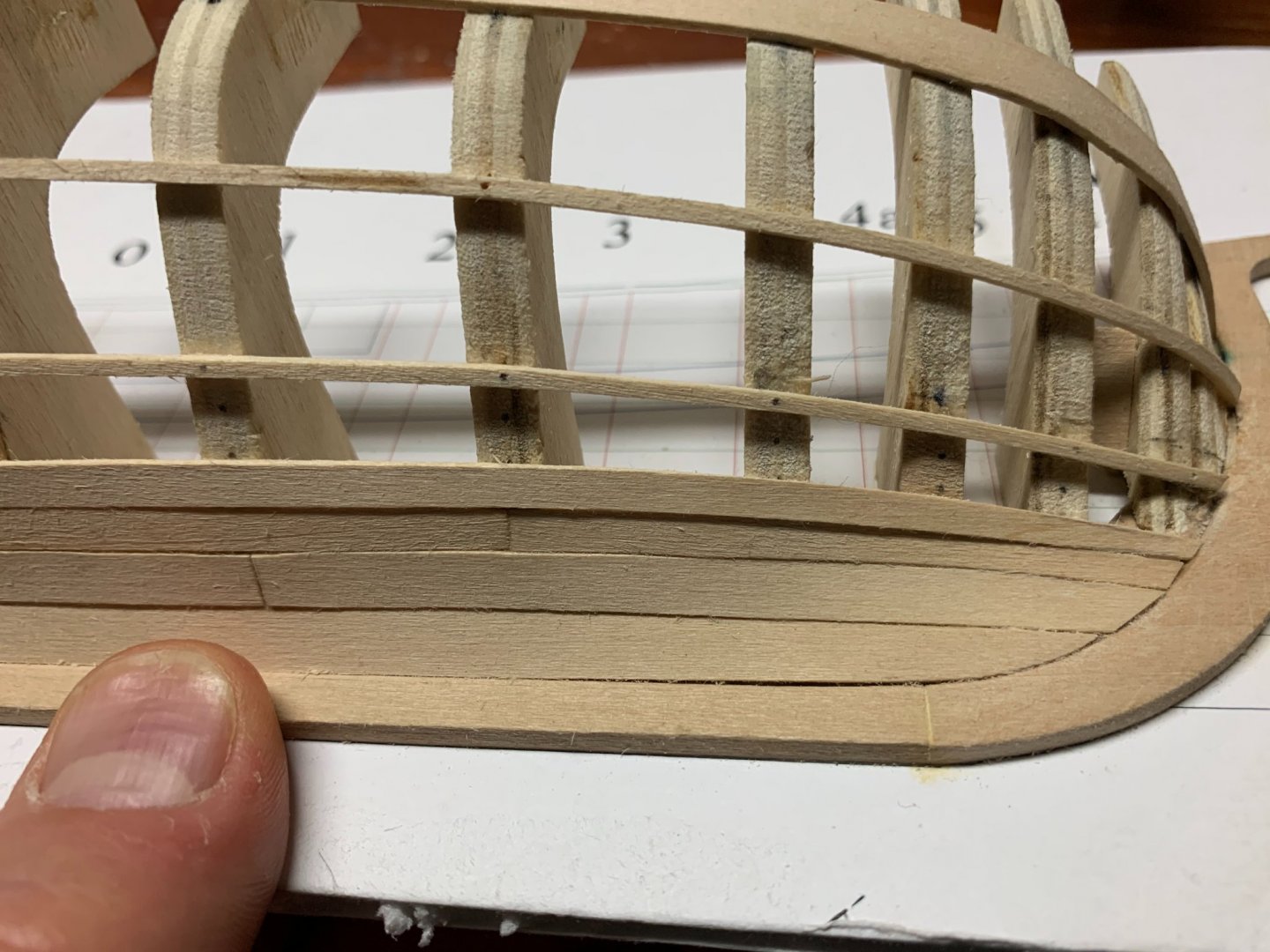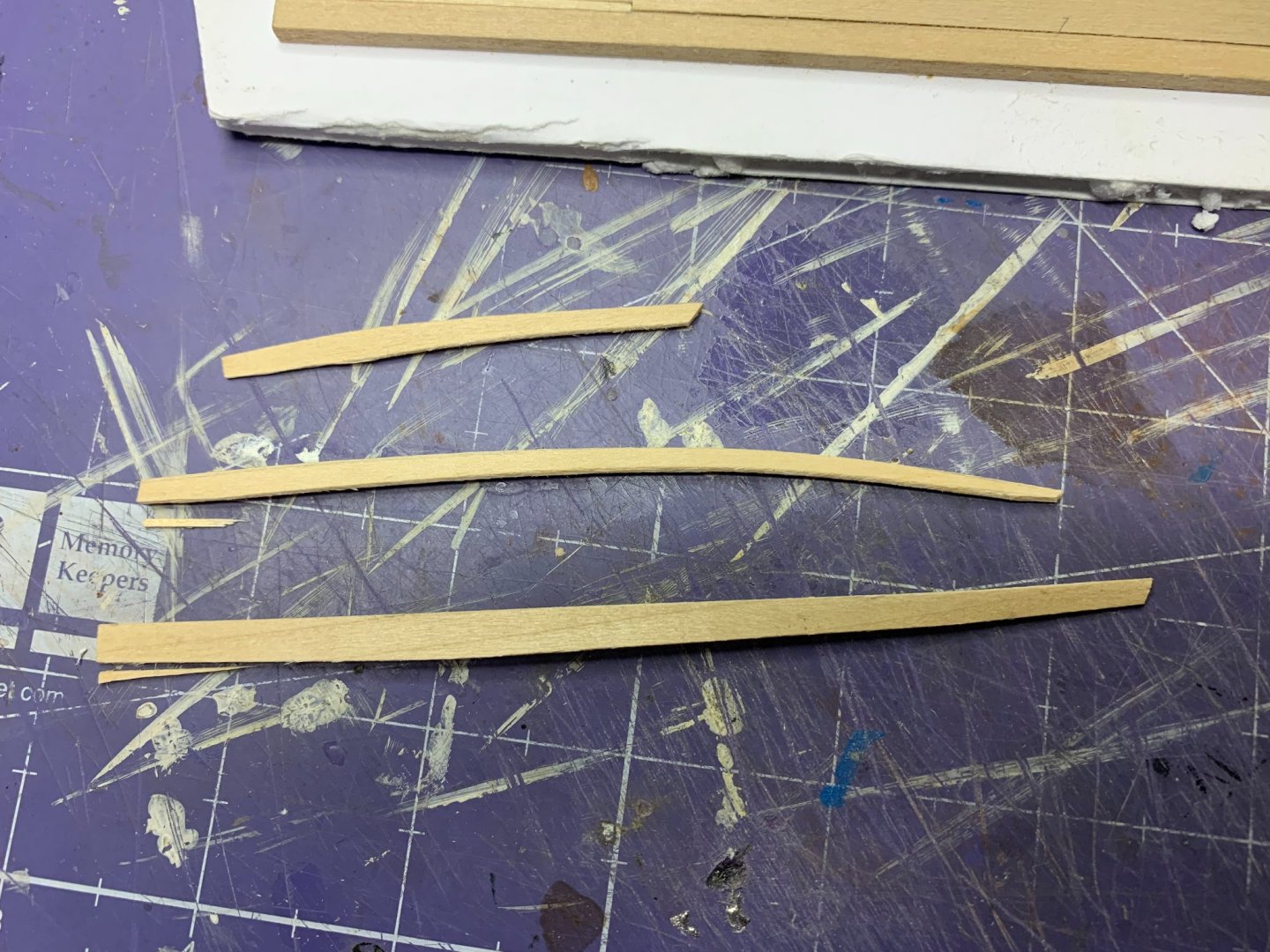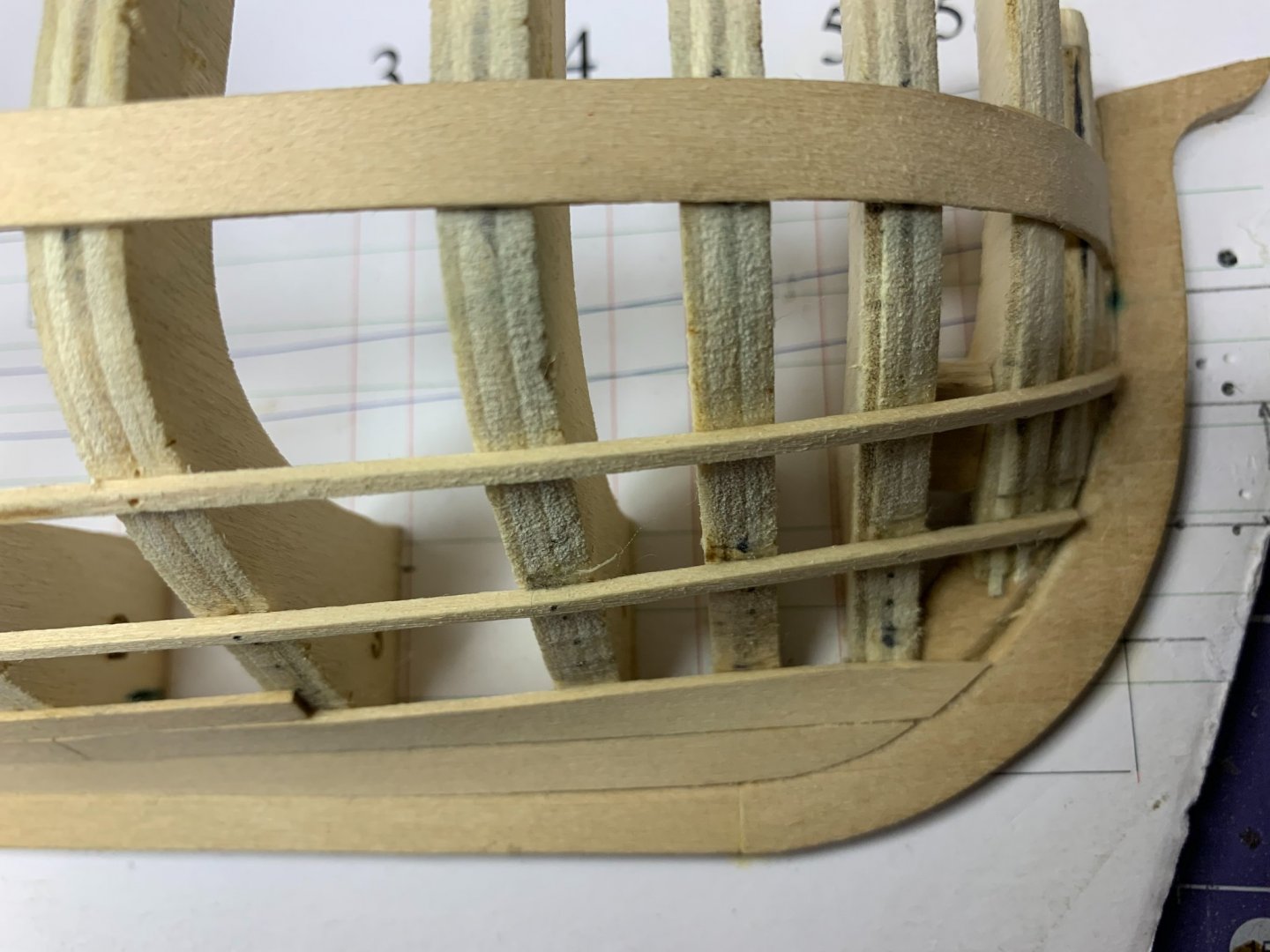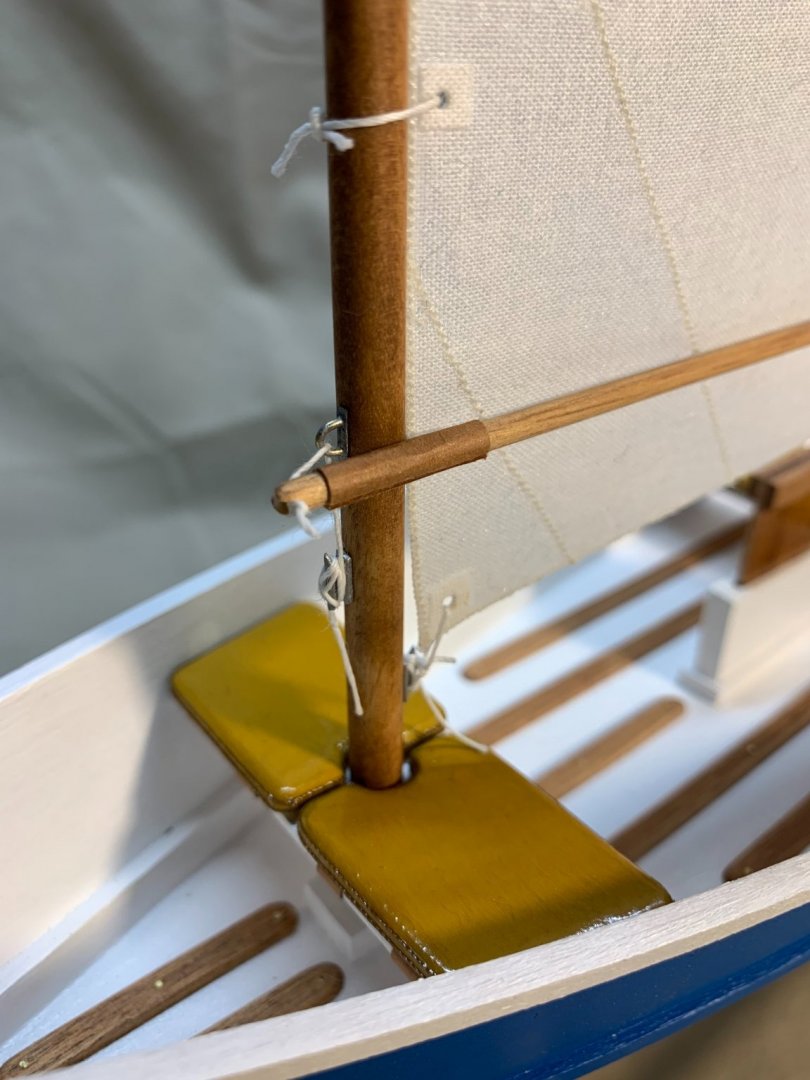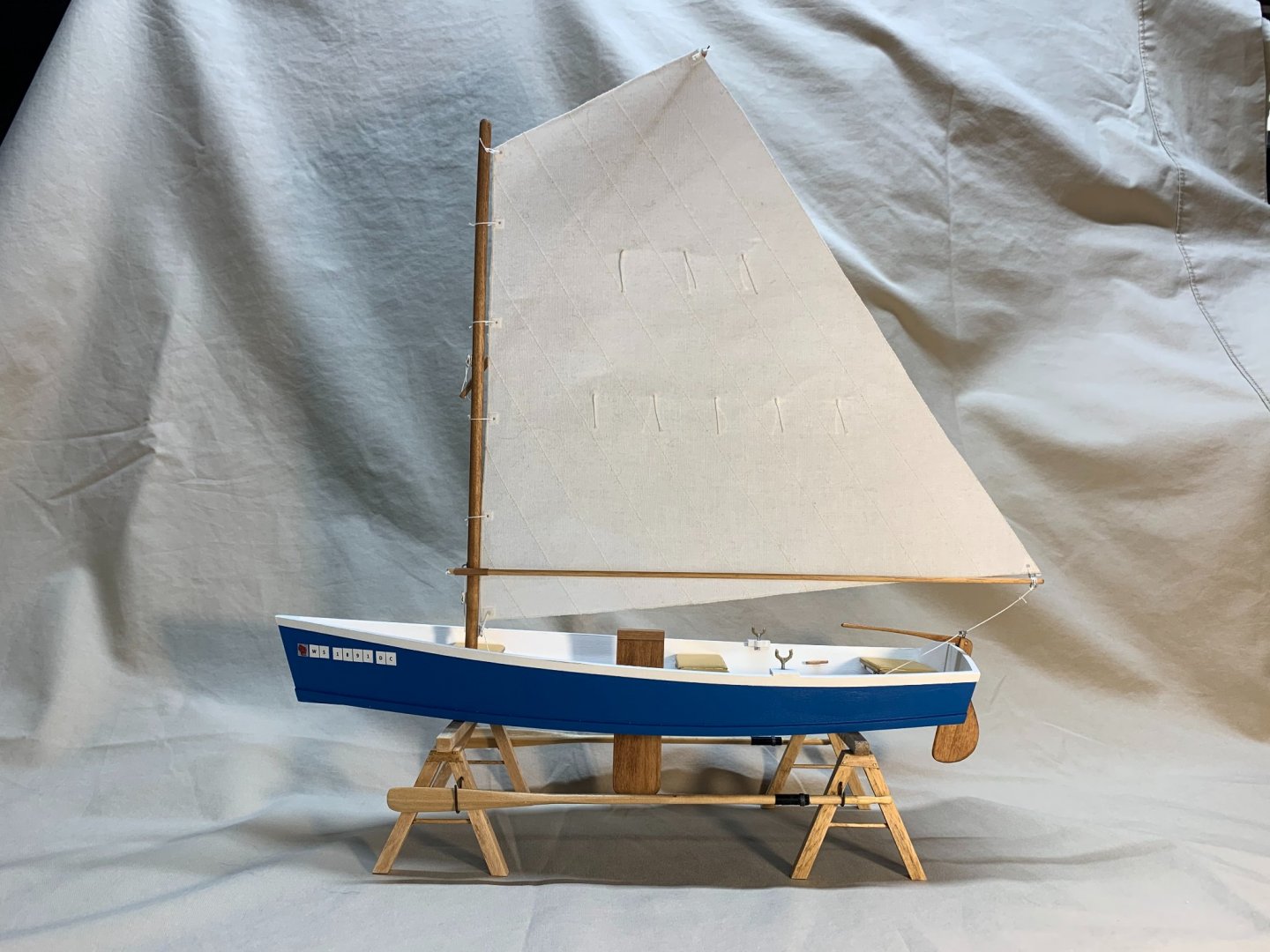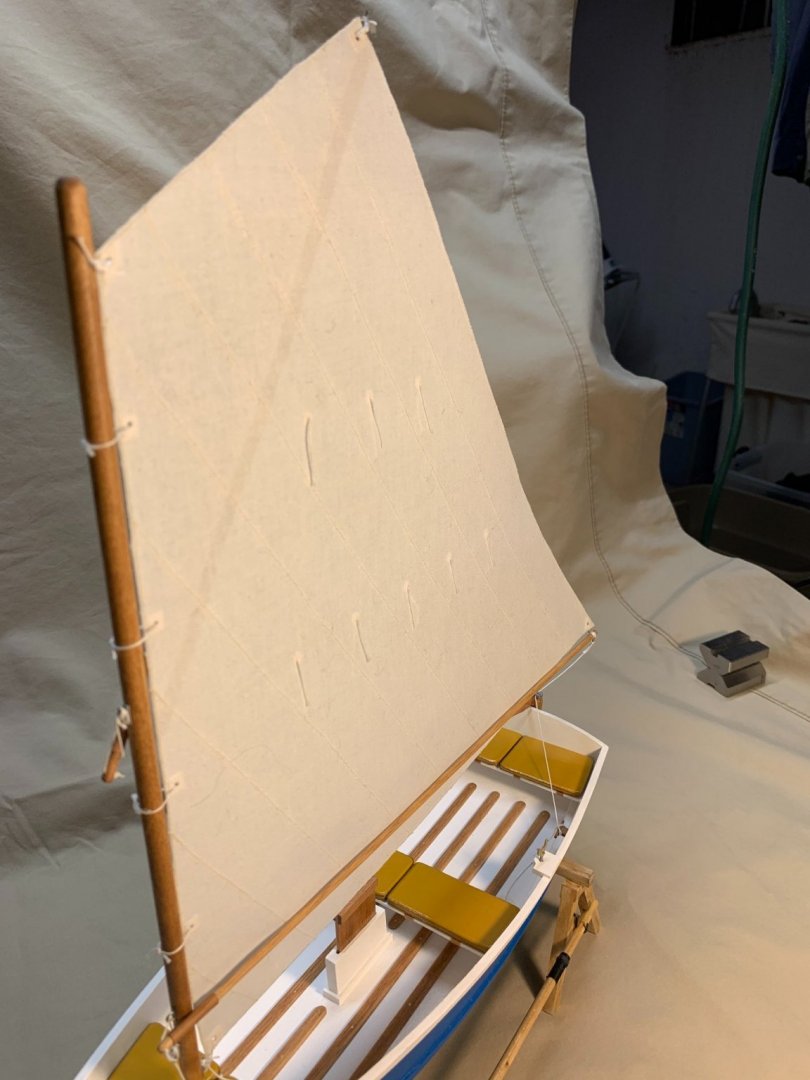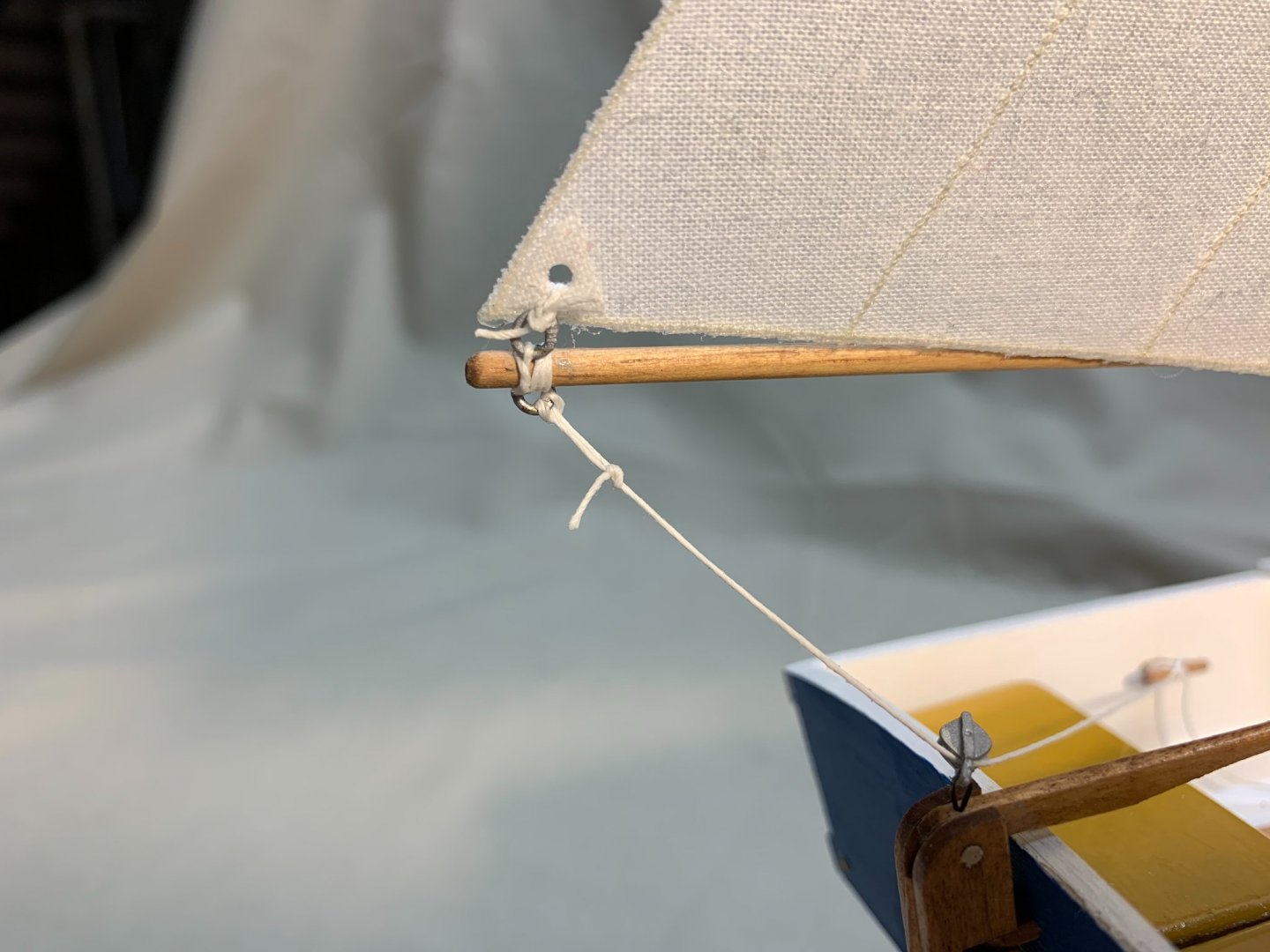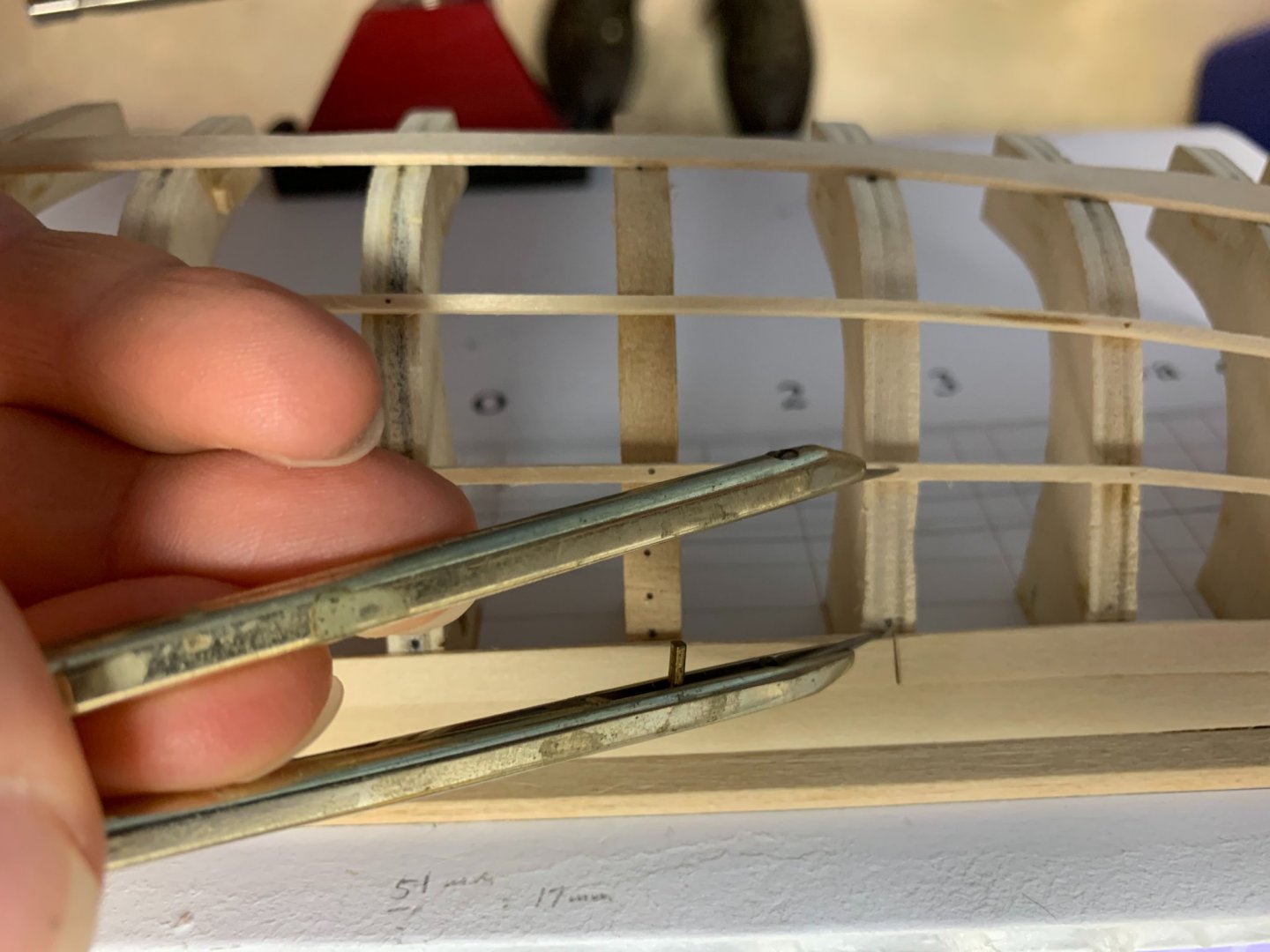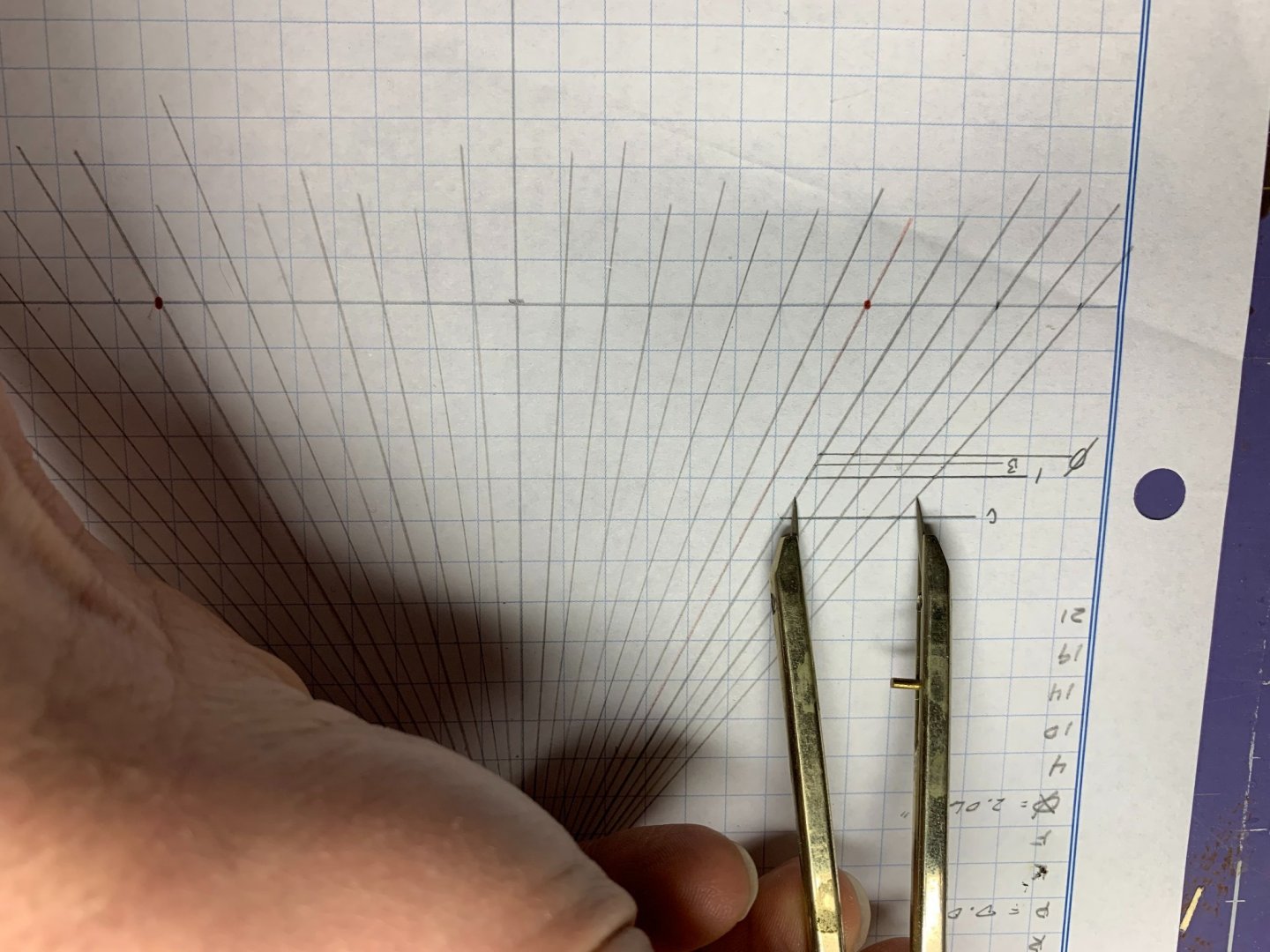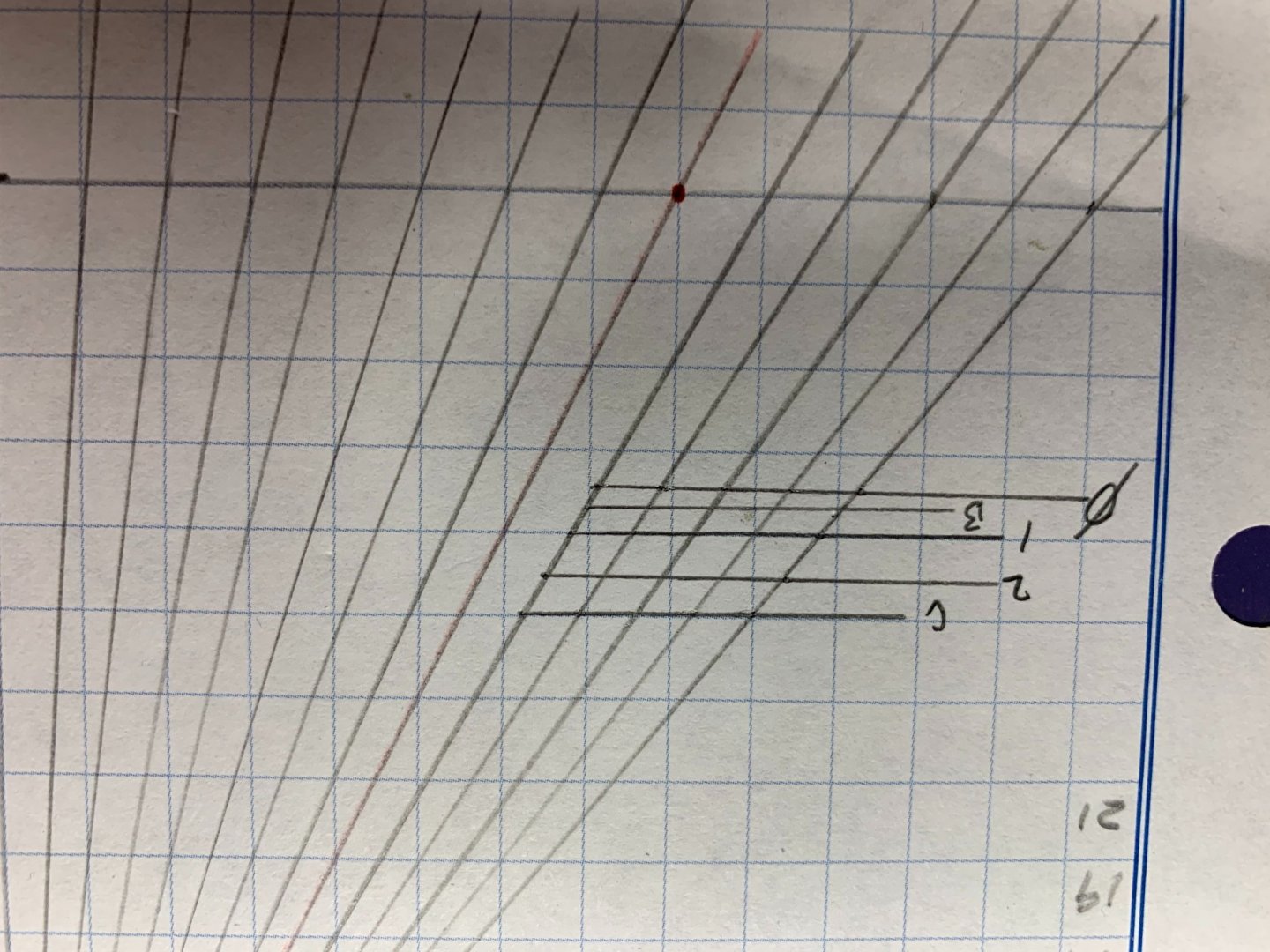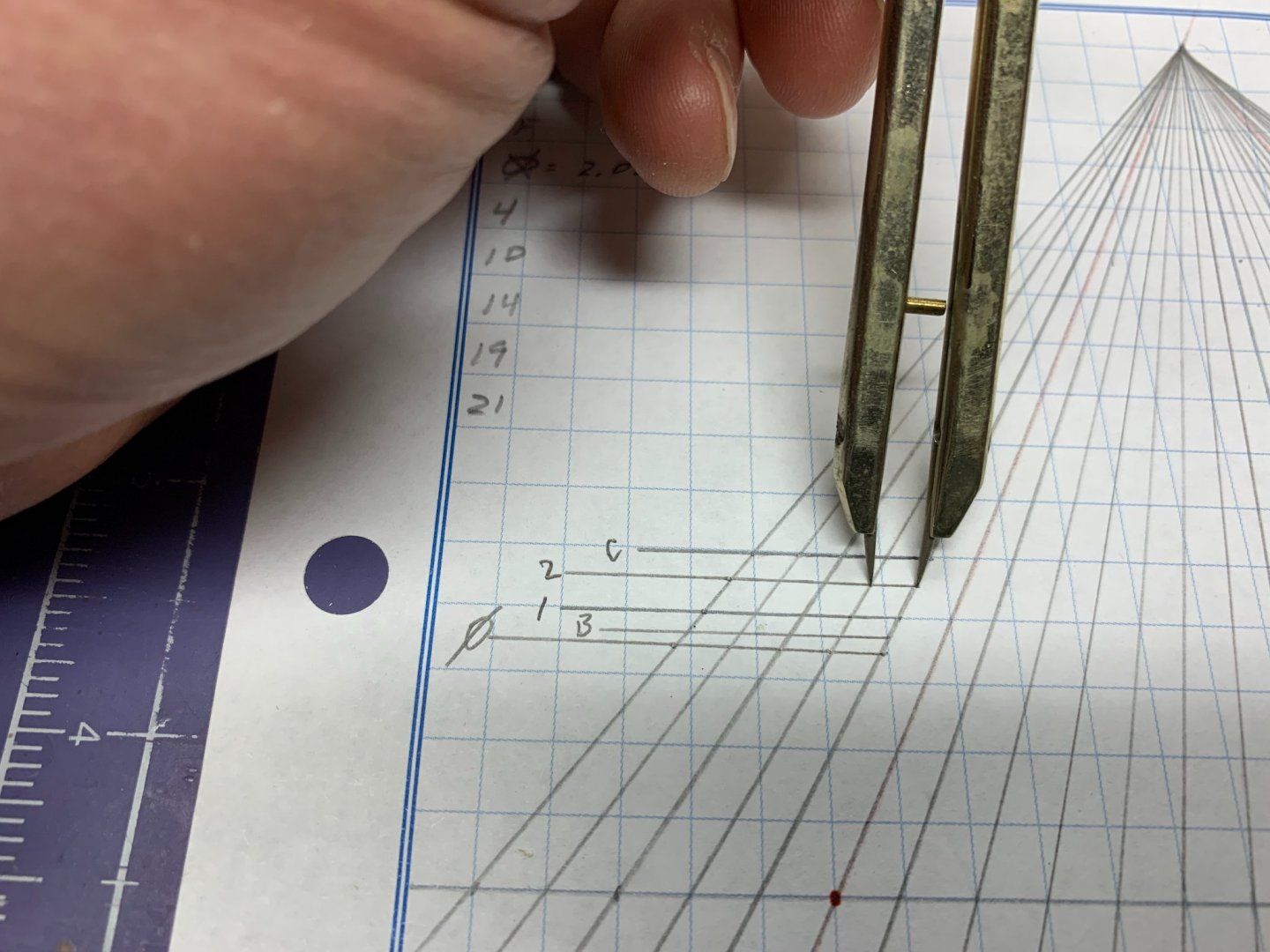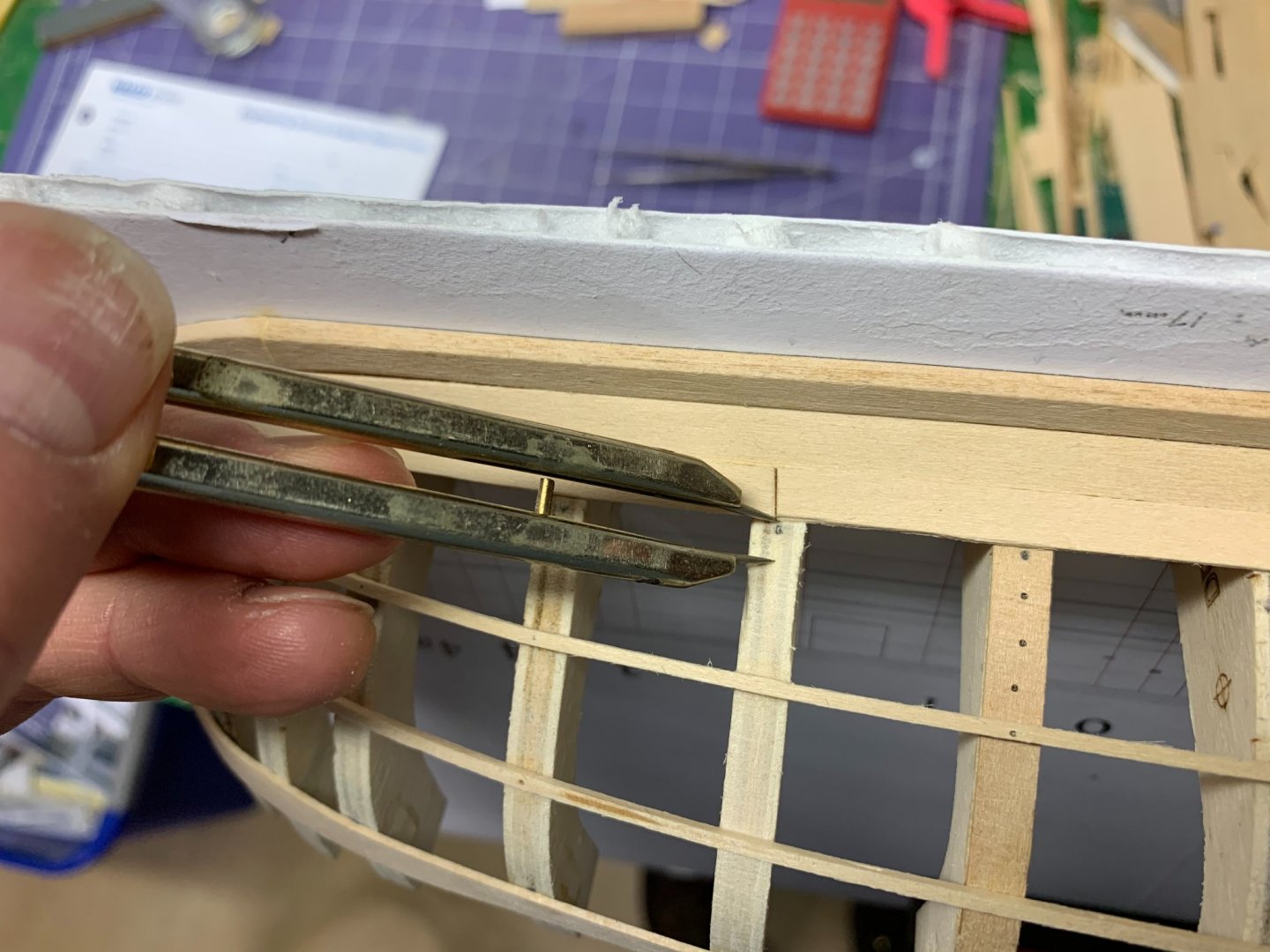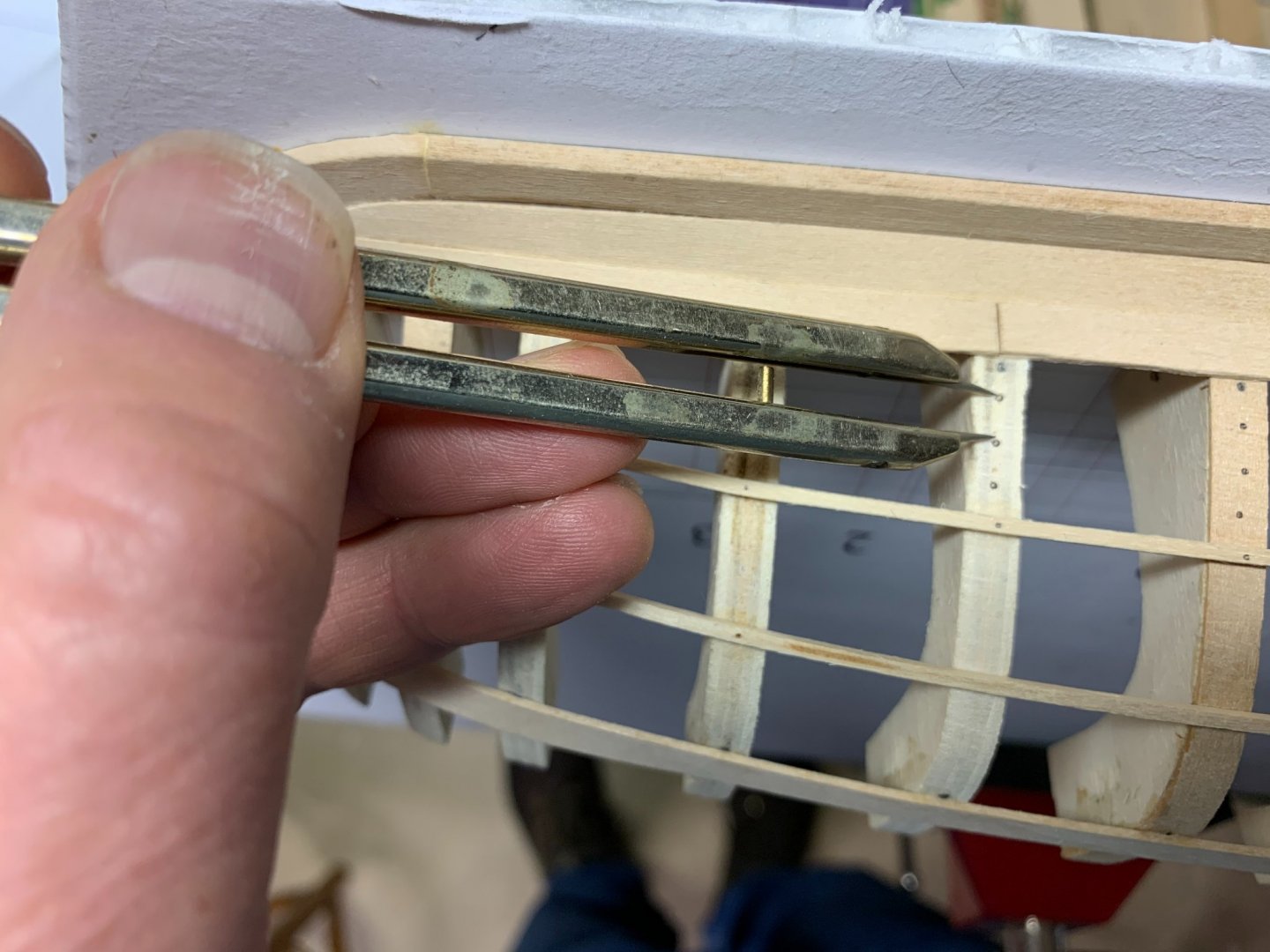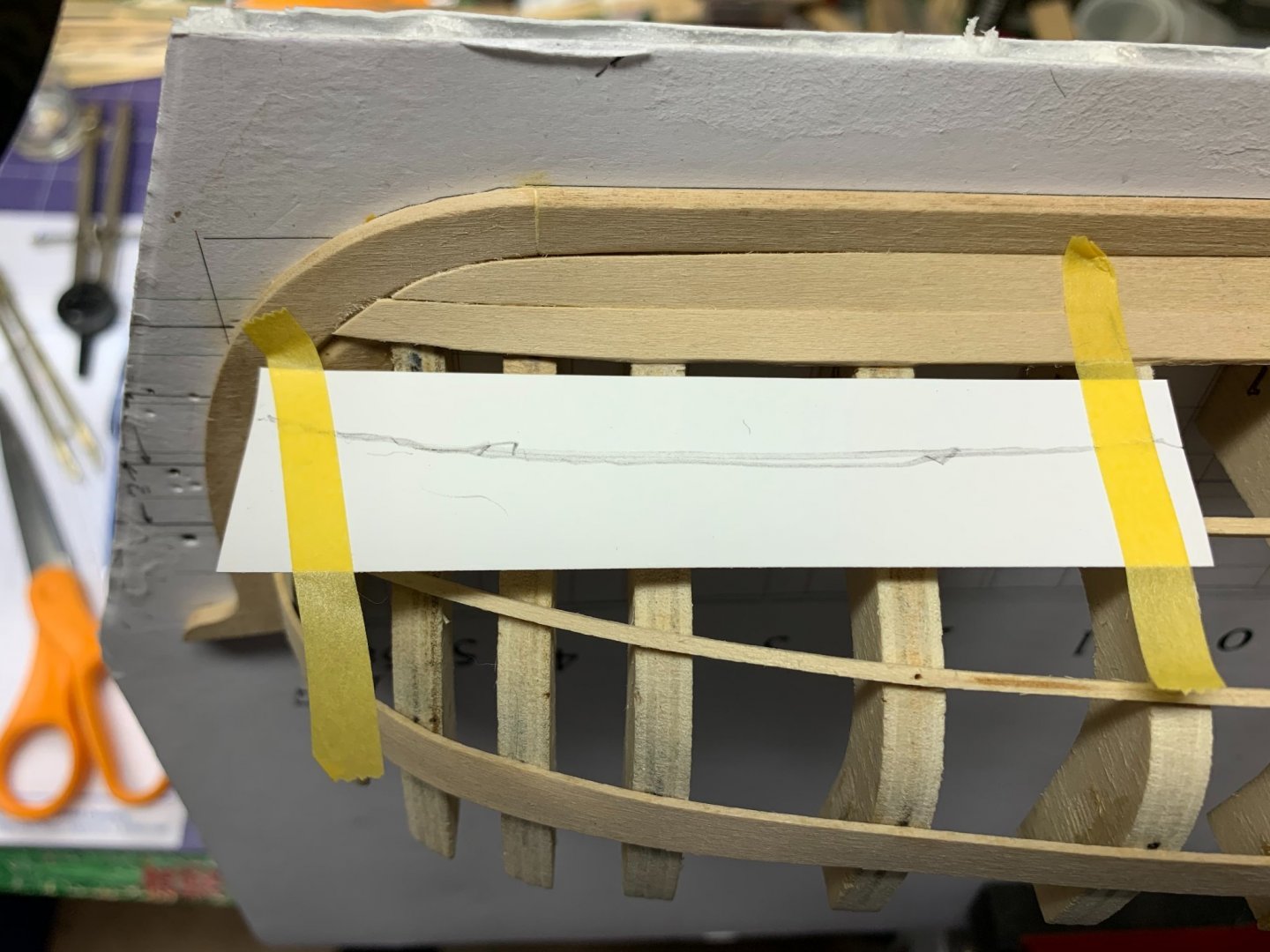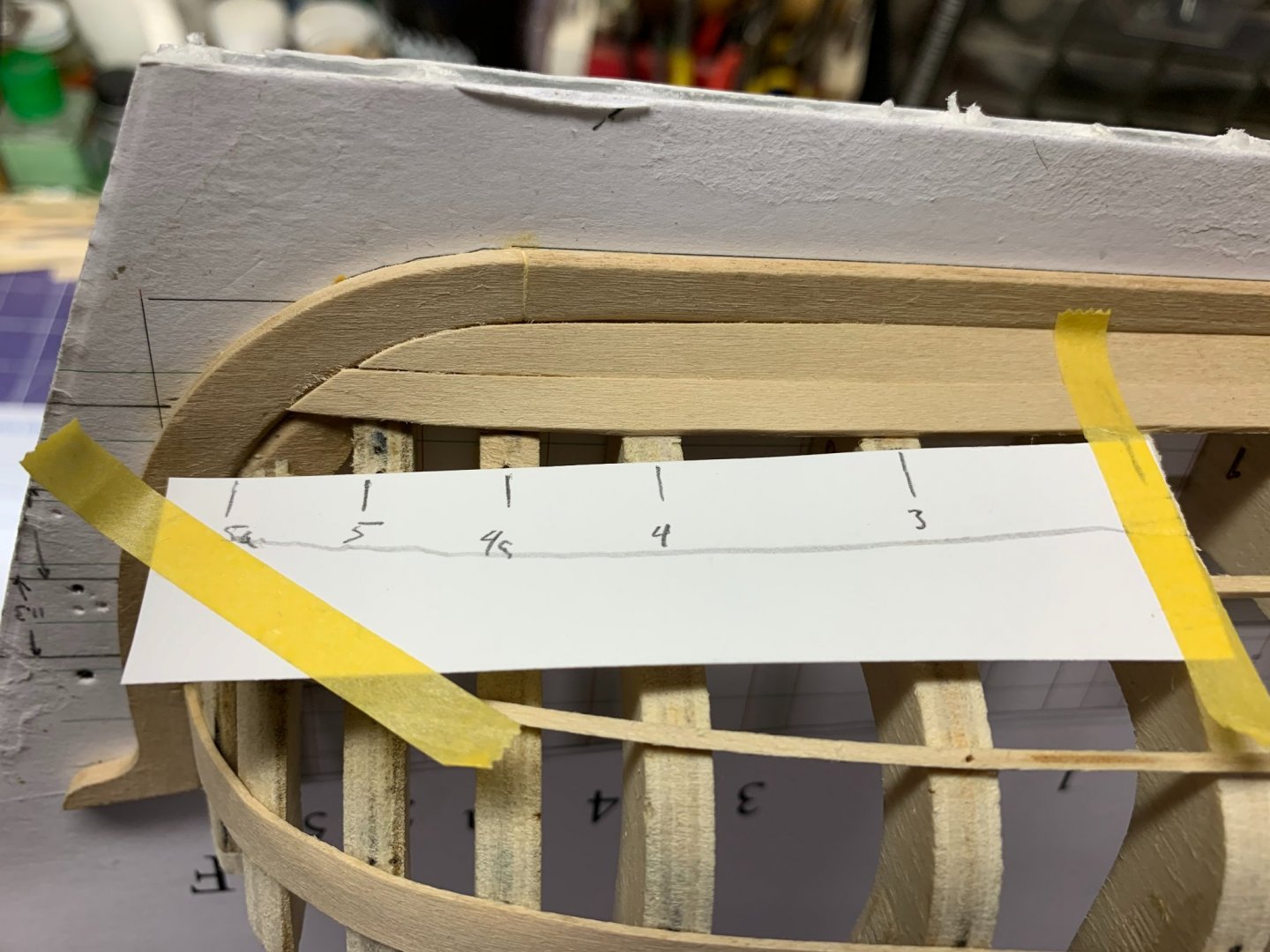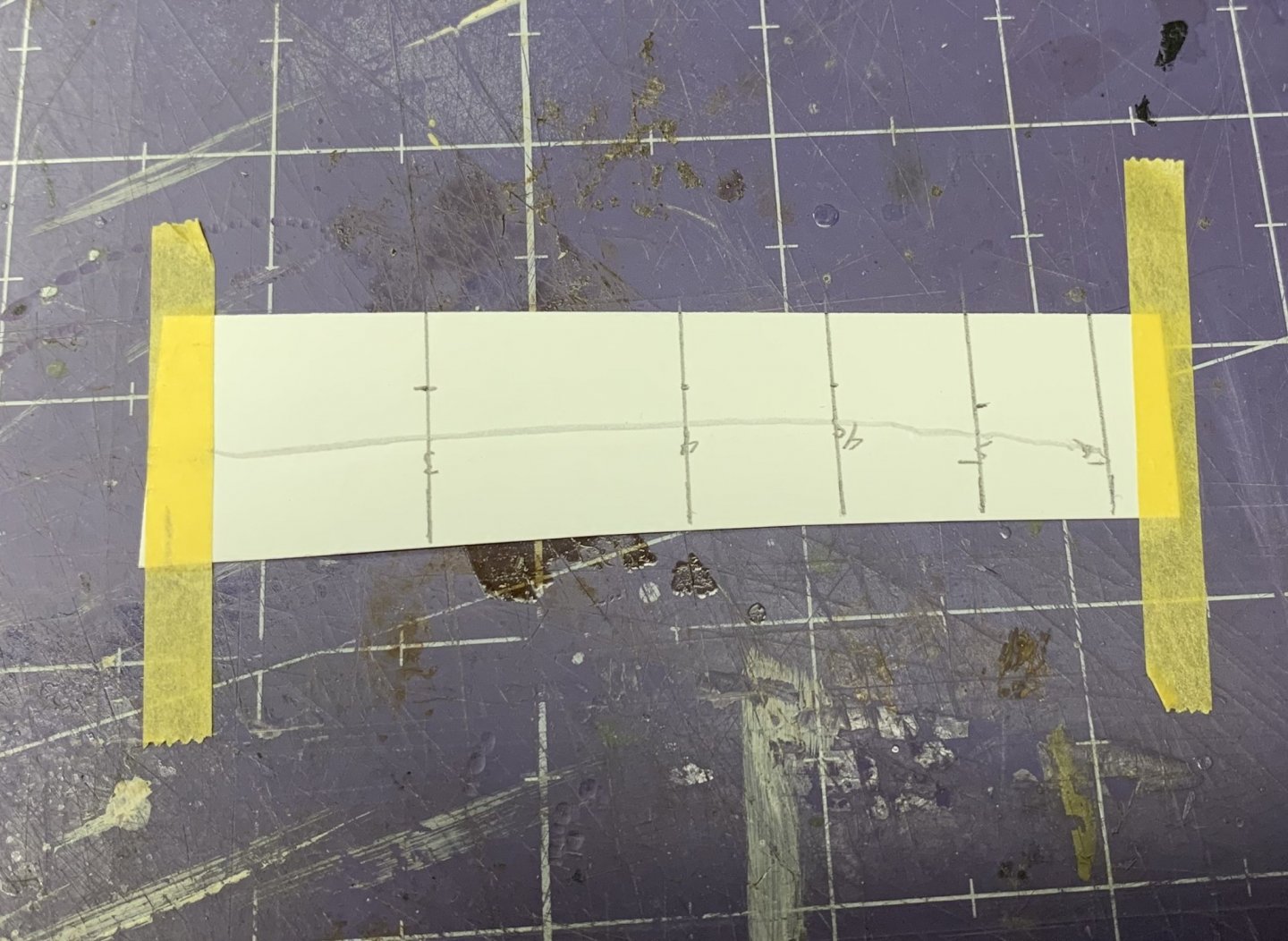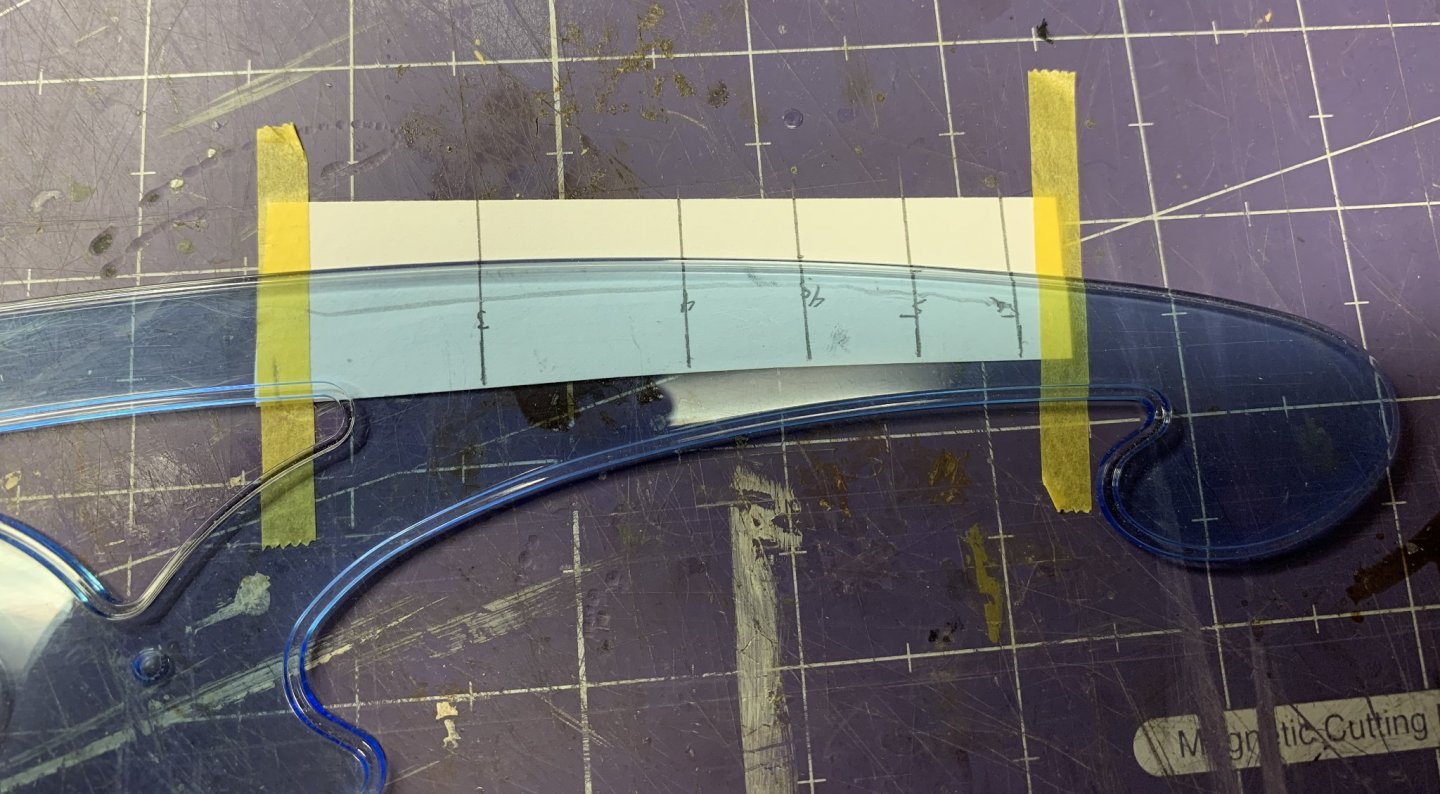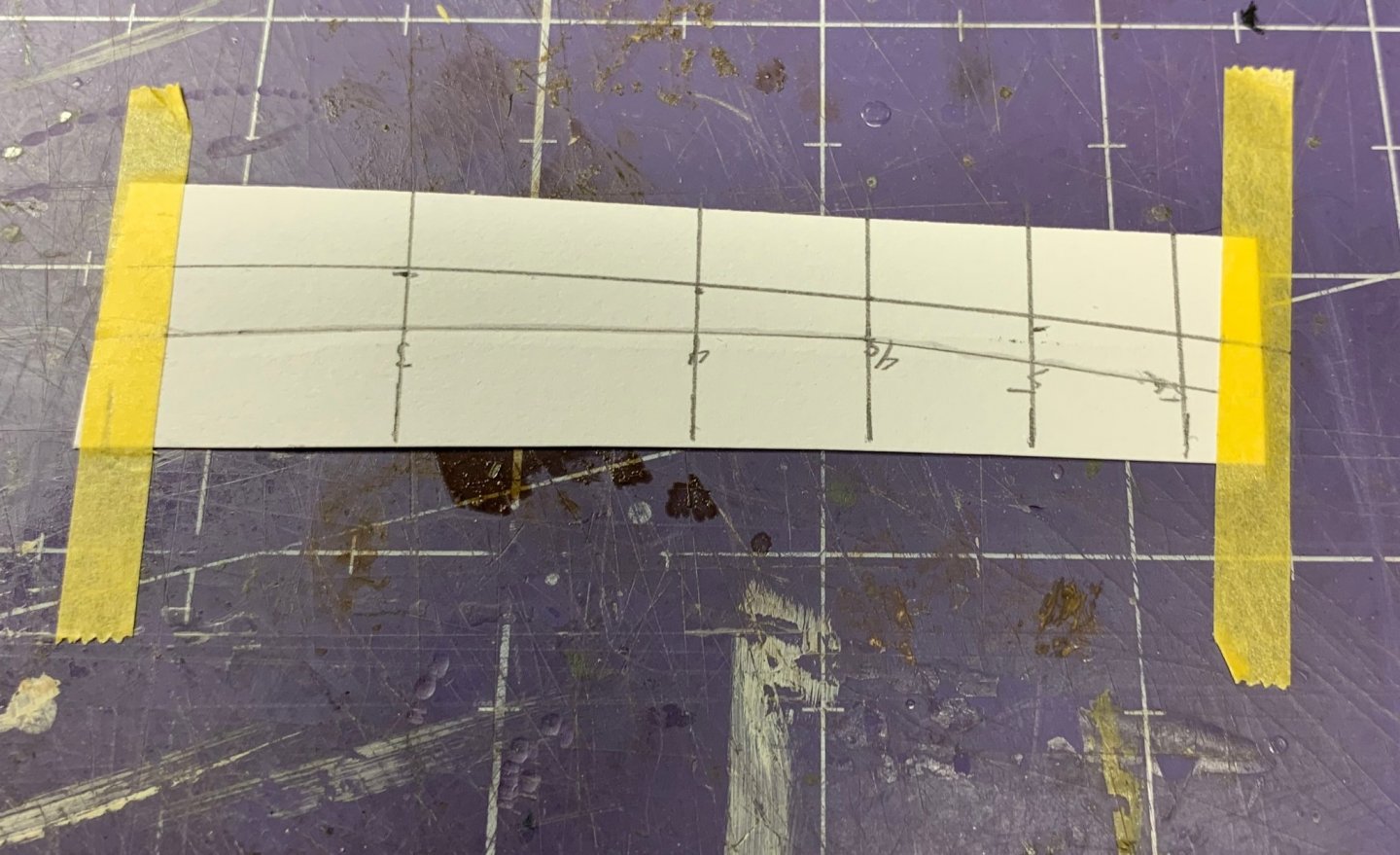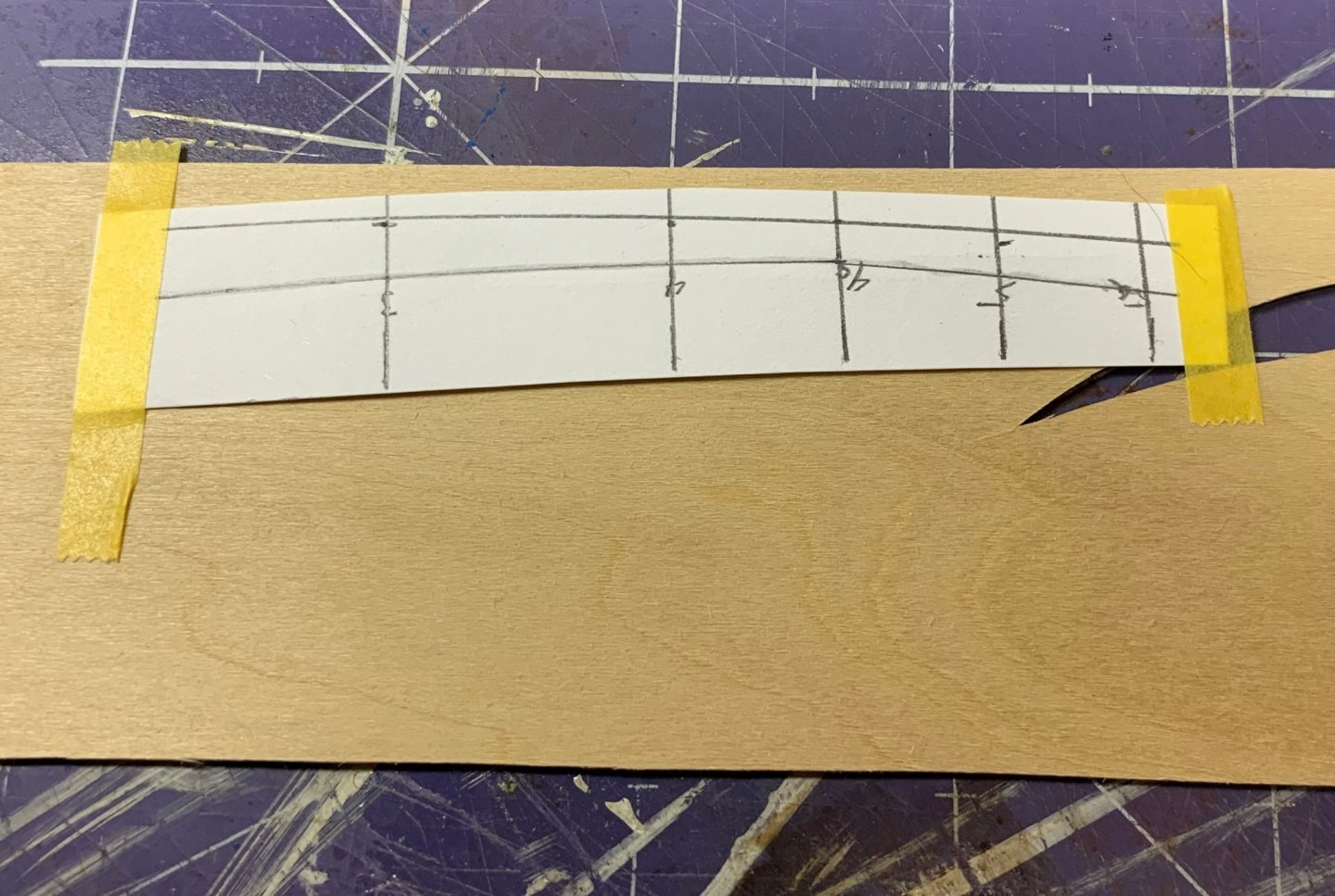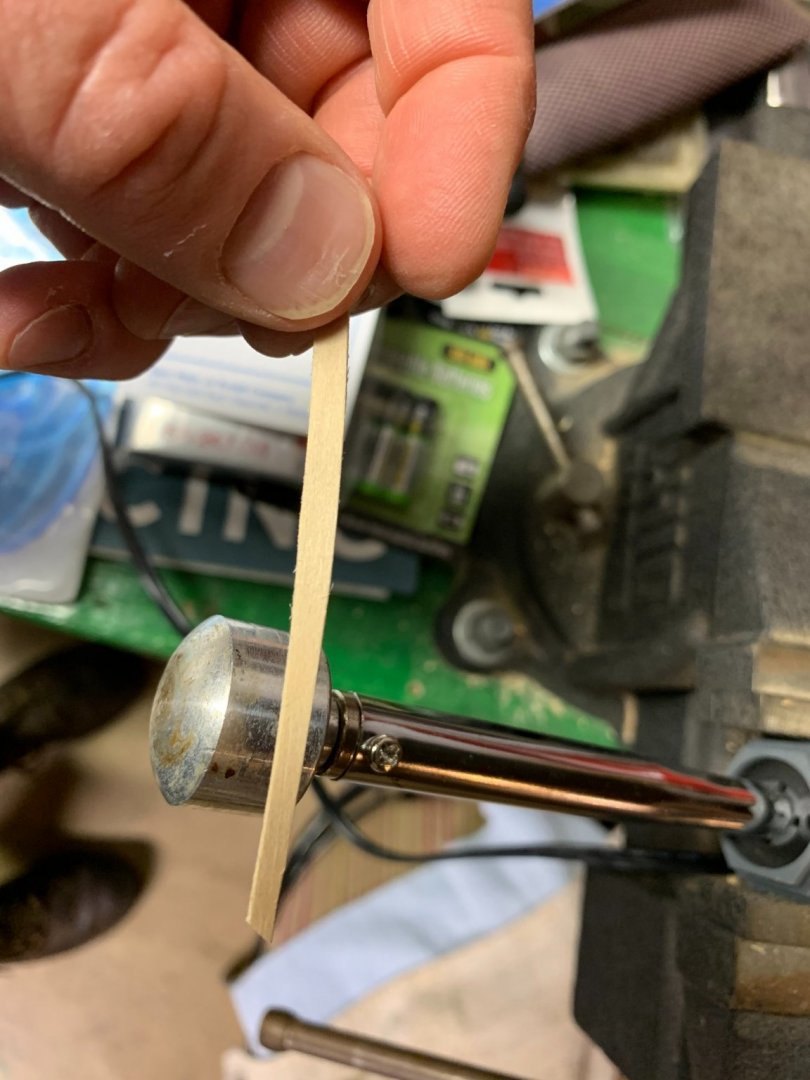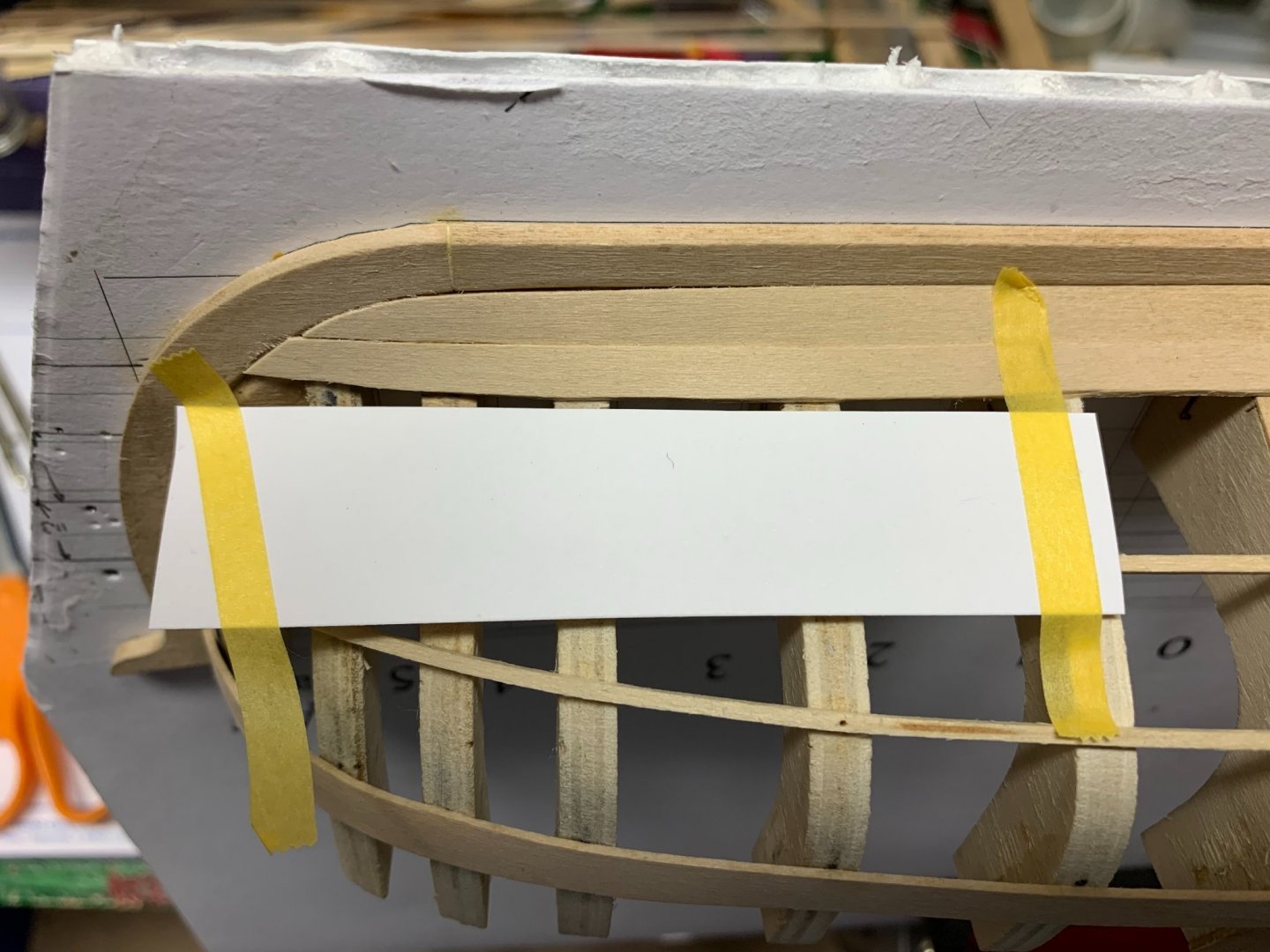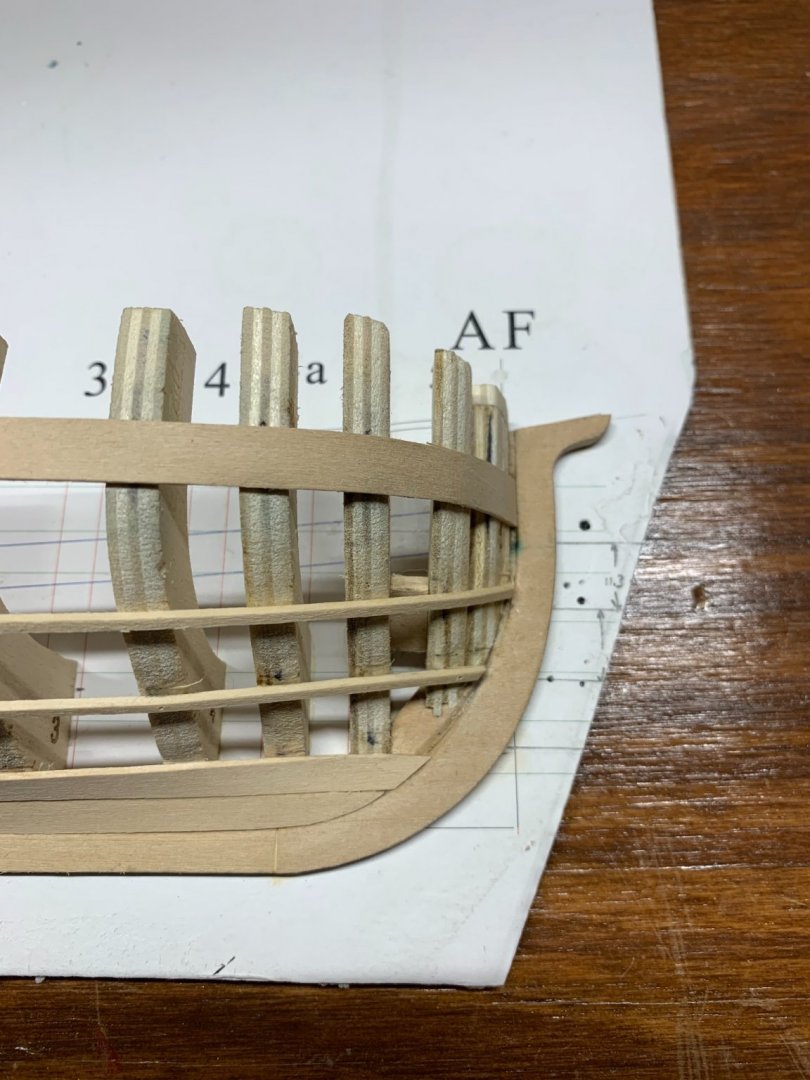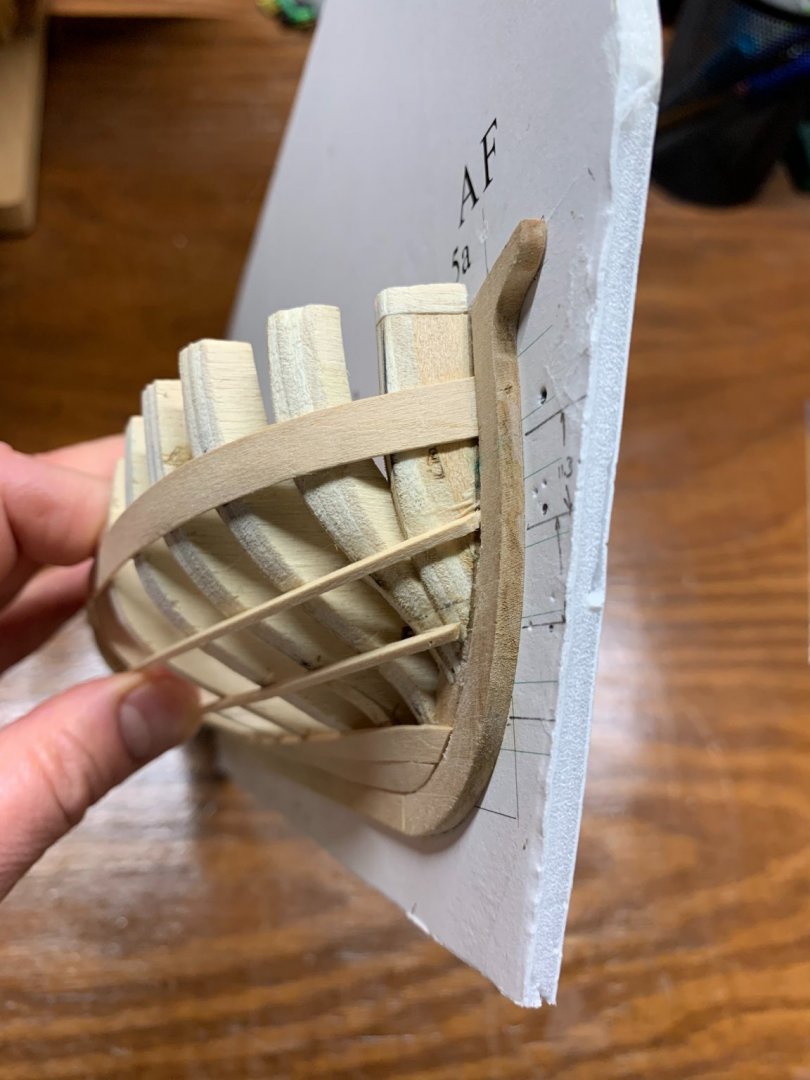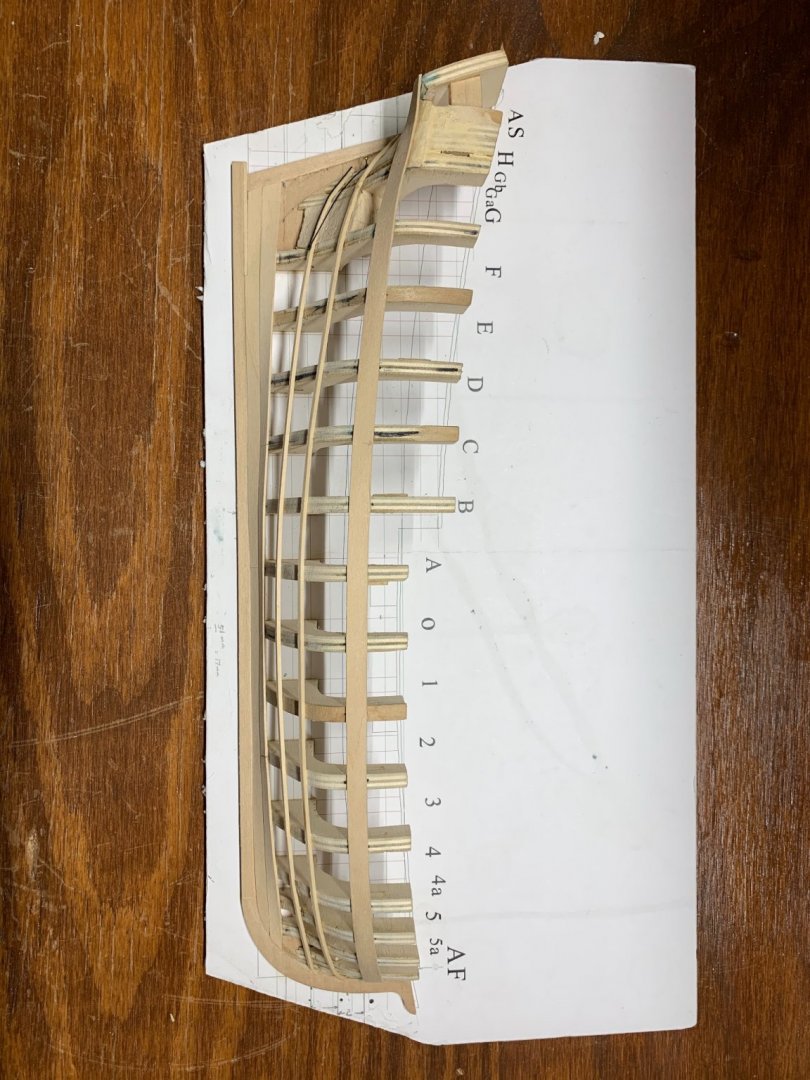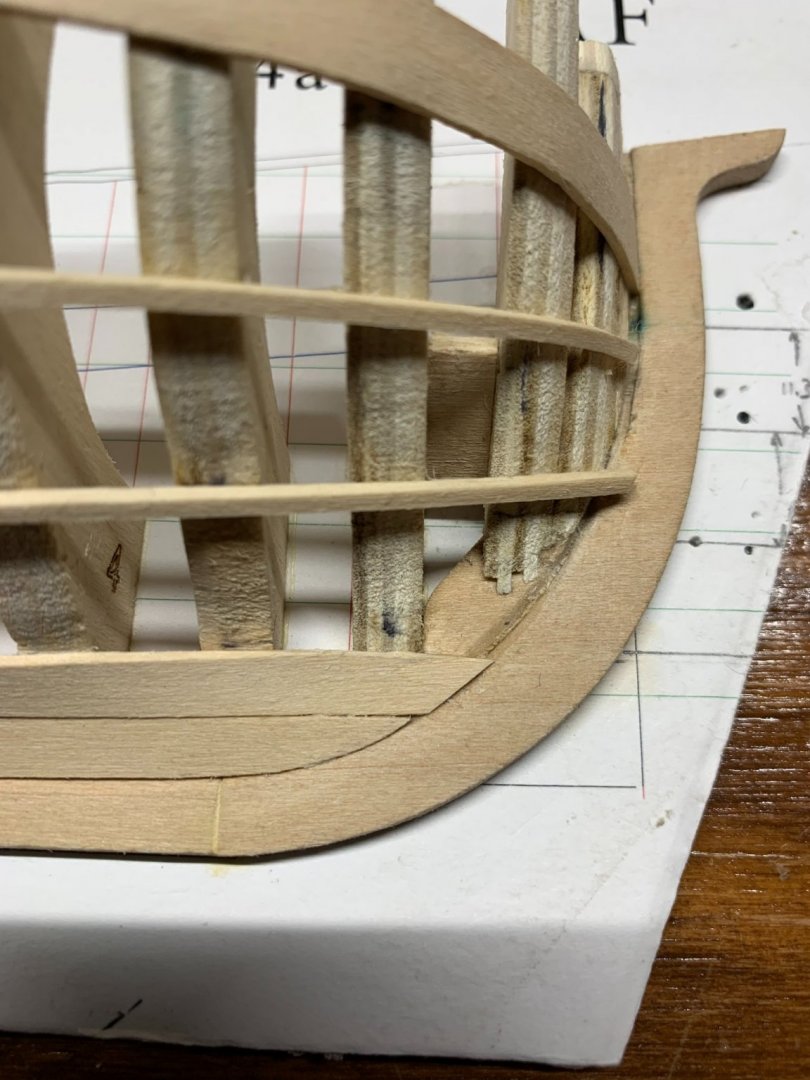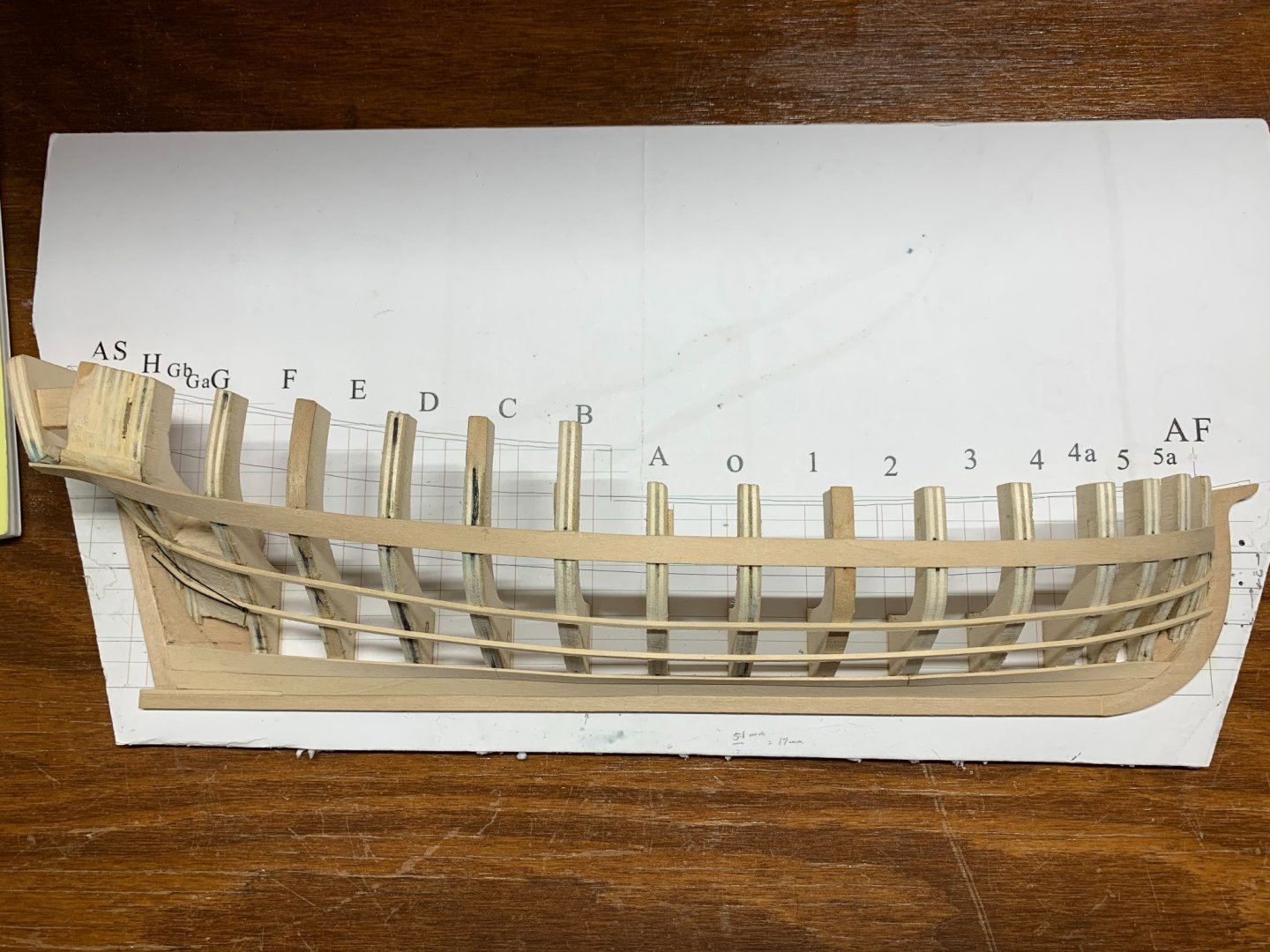
dcicero
NRG Member-
Posts
266 -
Joined
-
Last visited
Content Type
Profiles
Forums
Gallery
Events
Everything posted by dcicero
-
A couple of days ago, I posted here asking if the Davis book was worth using anymore. I scored a First Edition (1933) a while back and thought it would be fun to work through it. It appears, based on the posts above, that the answer is no! But, as long as one is not claiming to build Lexington, I suspect the techniques would work for any vessel for which accurate plans DO exist. Funny how synchronicity works... Many miles away Something crawls from the slime At the bottom of a dark Scottish lake Dan
-
Might be tough to get a definitive answer to this one, but the rig from Olympias would be a good source. And thanks for the reference to Severin's work. I read The Ulysses Voyage many years ago, when it first came out. (And I seem to remember reading The Brendan Voyage, too, although I don't recall any details of it.) I didn't know about The Jason Voyage, but I'll look for that one now. Most of what we know about these ancient vessels is conjecture. It's certainly been well-informed conjecture, but still conjecture. There are no plans. Getting what one can from a drawing on a vase is problematic, as is drawing conclusions from a couple of lines or poetry or from a play, and, although, say, the remains of a ship shed might exist, that doesn't tell you how to rig the ship that was stored there. Some of the problem is not even knowing what we don't know. I recall an anecdote about Olympias. When they started testing her, they found they were constantly breaking the ropes that attached the oars to the thole pins. Certainly, these things would break, but they were breaking all the time. Someone associated with the vessel was talking to a local Greek fisherman who showed them a knot that everyone, apparently, knew ... except the British guys who built Olympias. They tried the knot. Problem solved. Now, is that the same knot that was used 2,400 years ago? Who knows? Nobody knows. But that knot is certainly better than the one the British guys were using, so it's got to be closer to the original than theirs. The things you learn when you try things... Dan
-
I came upon a First Edition of Charles Davis' The Built-Up Ship Model a while back. It's a cool book, but I wonder how useful it is now. The book was originally published in 1933. I love reading old model building books just to see how people built ship models before most people had a lot of power tools, computers, digital research capabilities and all the modern stuff like photoetch and really great fittings. So, if a guy wanted to build the Lexington, would Davis' methods be worth pursuing? Or has the Swan-class books completely replaced this old book? Dan
-
The NRG kit does use spiling techniques. As Toni Levine has said about spiling, it's "the only right way to plank a hull." It's challenging and I built the half hull fully three times before I got it right. As Trevor noted, there are multiple planking techniques and I read them all as I did the NRG project. In the end, I used a hybrid technique that worked for me. The big lessons I learned were 1) spend a lot of time, more than you think you need to, fairing the hull. Any imperfection there will show up in the final project. 2) Lay out the three belts of planking and the individual spacing on each frame carefully once the fairing is done and then -- and this was a big thing for me -- BELIEVE YOUR OWN WORK. I would be going along, planking stuff and thinking, "that looks a little high" or "that looks a little low" and then making a decision on the fly that differed from the lines I'd laid out. Every time, my layout work was right and the spot decision was wrong and I needed to re-do work. Finally, 3) in the immortal words of Billy Crystal, "it is better to look good than to feel good." Every time you lay out a plank, make sure it looks good. It's one thing to be mathematically perfect, but the flow of the plank needs to look right. Once you're happy, move along, but not before. Dan
-
A friend of mine at work did a similar thing. She just used her phone to take an image of a page and then Google Translate would translate it into English. It wasn't perfect, but it was good enough. I had to return the book quite a while ago, but I'm thinking it might be worthwhile to request it again and do this. I very much would like to develop some plans for this model. And I would like to read the rest of the book. It's going to be, as you say, a lot of work, but the journey of a thousand miles starts with the first step. If I don't start, I'll never finish. I have two other projects in the queue right now. I'm building the NRG's Masting and Rigging kit -- which is great, but definitely not a "weekend build" -- and then I have a ship-in-a-bottle I'd like to finish off. I started it, but put it aside for the Masting and Rigging project. I don't know if I have the time to do two projects at once right now. Dan
-
Can't speak authoritatively on the reason for the bulwark height, but there's probably a good bit of psychological value in being able to get down behind something, regardless of its actual ability to provide protection. As you say, it was the chain armor that made the difference when Kearsarge battled Alabama. Dan
-
Quick update on what has kind of turned into a project. (I was just interested in this before, but now things are moving along.) First, Interlibrary Loan was able to get me a copy of the Roland Bockius book. Wow. Just ... wow. Thanks for that recommendation! It is incredibly detailed (and in German, which means I can't read it) and it includes seven sheets of plans. I took those over to my local copy shop and made myself a set of plans. (By the way, I know the University of Chicago -- which is very close to me -- has a copy, but the copy I got was from Emory University, which is in Atlanta, GA, quite a long way from me. Hard to understand how these things work, but just glad it did.) And, second, I heard back from EGEA about the model. The price is 96.99 Euros (the kit plus shipping from Germany to the US) which is $104 today, not unreasonable at all. Since they don't seem to take any kind of electronic transfer like Zelle or PayPal or Venmo, I'll have to find some other way to do it, but that shouldn't be too hard to do.
-
Thank you so much for that reference from the University of Chicago! The university is easy to get to from where I live. (It's near the Museum of Science and Industry too, where you can see the U-505. I never miss an opportunity to do that.) I'll see if I can get it through inter-library loan. My local library is great about getting books like that and, if there are plans for the boats, that might be all I need. And getting the kit to use the parts are templates is also a good idea. The kit is at 1:20 scale, which makes a model about 30 inches long. That's a big model. I think I would prefer one at something like 1:48, so plans are the way to go and templates would be useful too because they could be scaled and reproduced. Thanks to everyone for responding! I did a presentation at my local ship model club last week about these boats, their use and the Danubian Limes they protected. I've attached a copy for anyone interested. Dan Roman Boats on the Danube.pdf
-
Thanks! I sent an email off to Herr Doktor Dreyer and he answered me. They only sell the kit, not the plans. He didn't give me any details. I suspect you're right and the kit is very basic. I might still order one to see what shows up. I'd really rather have a good set of plans because I would never build such a model from plywood. Dan
-
This might be a long shot, but has anyone bought this model of the Fridericiana Alexandrina Navis, a reconstructed 1st century Roman boat used on the Danube River? The Friedrich-Alexander-Universität Erlangen-Nürnberg built and sailed this boat in 2016 and they now sell a kit of it: Kit - Roman boat of the FAU Erlangen-Nürnberg (fau-shop.de) I'd prefer to just get the plans and any other documentation that comes with the kit as the kit materials appear to be plywood and I wouldn't build a model from that. Just thought I would check here to see if anyone's got any experience with this. The subject is very interesting! Dan
-
To quote Zulu... Hook - "A spot of medicinal brandy would set me up, sir." Reynolds - "Brandy! Brandy is for heroes, Mr. Hook!" Dan
-
Interesting subject, I must say. I saw the James Caird in Sydney many years ago where it was on loan from England. It would make an interesting model. Too bad it's this company making the kit. Dan
-
Re: " Anyone else have hairspray in their toolbox?" I use hairspray on rope coils to make them lay like I want them and stay that way. Works great. Could I ask what kind of putty you use for the sea? How do you keep it from off-gassing and fogging up the inside of the bottle? Dan
-
Wonderful work. What a great model! Just a quick question. It doesn't seem like you did a lot of sanding on the inside of the canoe. Is that the case? It seems like it would be hard to sand with all those concave surfaces. Dan
- 84 replies
-
- peterboro canoe
- Finished
-
(and 1 more)
Tagged with:
-
Was Howard I. Chapelle Controversial
dcicero replied to SaltyNinja's topic in Nautical/Naval History
It would be hard to find another writer who contributed more to our understanding of naval architecture than Chappelle, particularly with regard to small, regional sailing craft, but I've read his books. "Dry" doesn't begin to describe them. I can't imagine reading them for pleasure. I've referenced them many, many times and used the drawings in them as references. There's a ton of information there, certainly, but I wouldn't even call his writing style academic. There are plenty of serious academics who write in an engaging style. Chappelle isn't one of them, even when compared to other writers of his time. I don't think -- to get back on topic -- he's particularly controversial. I think his essay on "models that should not be built" just puts forth an argument, well supported. I don't necessarily agree with it -- if you want a model of USS Constitution, knock yourself out -- but he wrote it from a position of great knowledge, skill and experience. Got to admire that. He's worth reading. -
Re: "Two models for the price of one!" And they only take up the space of one model! Dan
- 9 replies
-
- Model Shipways
- Lowell Grand Banks Dory
-
(and 2 more)
Tagged with:
-
Very nicely done model, Reece. And on that whole "build it, tear it apart, do it again" thing? I've just learned to accept that that's part of ship modeling. I look at it this way. I build every model twice ... at the same time! Dan
- 9 replies
-
- Model Shipways
- Lowell Grand Banks Dory
-
(and 2 more)
Tagged with:
-
Thanks, Toni, That explains a lot. I installed another strake yesterday, but it was looking a little weird too. I suspect it has more to do with the shape of the strake below it than anything else, so I removed it, along with the plank just above the broad strake that you pointed out. Only a little bit of splitting on those planks when I removed them, so I can probably use them for templates for new ones. And here's what it looks like now. How do you usually deal with the tops of the planks when you find a defect? Do you carve them in place? Or do you remove them and and just make another? Making each of these planks is a time-consuming process (at least the way I'm doing it) and it seems that, no matter how carefully it's done, defects appear when the plank is actually glued in place. Is there any way to adjust them in place? I know I can't add any wood to a plank that's been carved too aggressively, but it seems like I can remove wood from one that needs trimming. Dan
- 39 replies
-
Stitching sails with sewing machine
dcicero replied to Jorge Hedges's topic in Masting, rigging and sails
I just finished a model rigged with a sail. I used Steve Wheeler's technique from an article he published in Ships in Scale in 2004. He built spectacular 1:12 boats and used 700 count cotton fabric to make the sails. There's plenty to learn in his article, but the biggest keys for me were 1) use an embroidery stabilizer to stiffen the cloth and prevent deformation and 2) use an automotive lacquer to further stiffen it after it's been sewn. I set my sewing machine for the finest stitch it could make, used a fine thread and the smallest needle I had. I'm happy with the results. Dan -
Progress... I made a decision not to just re-do what I did before, but to try to understand what went wrong the last time and how to get it right this time. I re-read Toni's instructions. I re-read Planking the Built-Up Ship Model and David Antscherl's A Primer on Planking. I also read through a number of build logs here on MSW. I watched a few of Chuck Passaro's videos. And I incorporated some techniques I've learned through the Nautical Research and Model Ship Society of Chicago. Here's the step-by-step process I went through with the first plank above the broad strake using a mash-up of all those techniques (all of which produce perfect results, by the way). First, I measured with dividers the distance between the middle of the batten and the top of the prior plank. (That's from Planking the Built-Up Ship Model.) Then I constructed a table of equal distances. (I learned this from Bob Filipowski from the NRMSS.) I have to fit four planks in the distance measured, so I just found the line at which the distance equals four spaces on the table. Then I drew a horizontal line for frame 2. (For some reason this photo and the next are upside down, even though I edited them before uploading them here.) Each of those divisions equals the proper width of the plank at that frame. By labeling all those lines, I can go back to this table at any time and determine what the plank width ought to be. Then I used an awl to make a small mark on the frame showing where the plank edge should be. My goal is to have the top of the plank cut that tiny circle in half when it's in place. (That small mark at the top of the broad strake was misplaced. I needed to adjust the width of that plank when I installed it.) All ready to make the plank. I found the blue painter's tape Toni recommended to be difficult to use because it twisted a little every time I tried to use it. I used Antscherl's process, using a piece of cardstock. Just cut a piece slightly wider and longer than the plank you intend to make, position it close to the top of the lower plank with just enough gap to fit your compass point into. Mark each of the frames on the cardstock and run a compass point along the top of the lower plank, marking a parallel line. Now I have the bottom edge of the plank defined. Remove the cardstock from the model and, at each frame, take the measurement from the table of equal distances for those frames and make a mark on the cardstock. Using a French curve or ships curves, connect the dots. In Planking the Built-Up Ship Model, the point is made that you don't necessarily want to "connect the dots." Just describe a smooth curve. (There's a great diagram in that book showing what your plank should not looks like.) Use the French curve to clean up the line drawn by the compass too. And now you have a template. With which you can cut out the plank. I did find it difficult, at times, to clamp the planks in place. And now, with the bigger battens in place, I've found it impossible to fit clamps in there. I watched a few of Chuck Passaro's videos about planking HMS Winchelsea. He uses heat to bend the planks. David Antscherl makes the point that wood can be bent in two planes, but not three. In my experience, it can be bent easily longitudinally (back an forth), easily torsionally (twisting) and with some difficulty laterally (side to side). That's not to say edge bending doesn't work. It does. I built my Longboat using nothing but edge bending and Chuck uses edge bending in his videos, but the fact that these planks have been spiled eliminates the need for edge bending. It doesn't eliminate the need for the plank to bend in the other two planes. The fact that clamping these planks is problematic -- for me, at least -- meant that I needed to bend the planks and get them to stay where I wanted them without pressure. I heated up my plank bender ... which is nothing more than a soldering iron. I wetted the plank before bending it. That's optional, but it made this process go quickly and smoothly. From there it was just a little sand-fit, sand-fit, sand-fit until the plank sat nicely where it belonged without the need to clamp it. Here's the result. No gaps, no bulges, no cracks, no deformation. With one exception, it cuts my little marks in twain. No connecting the dots, just a smooth curve. So that's it. I only have to do that about another hundred times -- accounting for the ones I'll mess up -- and this thing will be done! Dan
- 39 replies
-
I suspect institutions -- libraries, universities, etc. -- pay for access for their members, so if you can demonstrate that you're associated with one, you can get in. I suspect, if you contacted the publisher, they would either sell you the article you're interested in or direct you to an institution that would loan it to you. Particularly on technical subjects, I expect to pay for good information. We subscribe to a data service at work that costs a fortune. Every year I have to answer questions about how much value we get from it and every year we renew that subscription. The people who run that service earn every penny of it. Dan
-
To avoid the “smiley face,” I dropped the forward ends of both battens a little bit. I thought, sighting along the hull, that the previous way looked better, but I think the battens now better describe the run of planking. Dan
- 39 replies
-
Thanks, Toni. I detached the lower batten and repositioned it. I didn't move it much. Moving it much lower really changed the sweep of the batten a lot. Last night, I got my replacement broad strake in. It looks much better. And I laid out the stealer.
- 39 replies
About us
Modelshipworld - Advancing Ship Modeling through Research
SSL Secured
Your security is important for us so this Website is SSL-Secured
NRG Mailing Address
Nautical Research Guild
237 South Lincoln Street
Westmont IL, 60559-1917
Model Ship World ® and the MSW logo are Registered Trademarks, and belong to the Nautical Research Guild (United States Patent and Trademark Office: No. 6,929,264 & No. 6,929,274, registered Dec. 20, 2022)
Helpful Links
About the NRG
If you enjoy building ship models that are historically accurate as well as beautiful, then The Nautical Research Guild (NRG) is just right for you.
The Guild is a non-profit educational organization whose mission is to “Advance Ship Modeling Through Research”. We provide support to our members in their efforts to raise the quality of their model ships.
The Nautical Research Guild has published our world-renowned quarterly magazine, The Nautical Research Journal, since 1955. The pages of the Journal are full of articles by accomplished ship modelers who show you how they create those exquisite details on their models, and by maritime historians who show you the correct details to build. The Journal is available in both print and digital editions. Go to the NRG web site (www.thenrg.org) to download a complimentary digital copy of the Journal. The NRG also publishes plan sets, books and compilations of back issues of the Journal and the former Ships in Scale and Model Ship Builder magazines.



